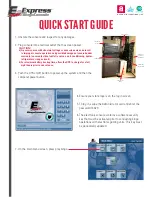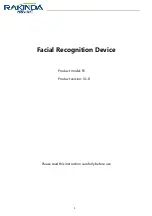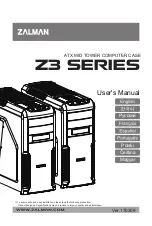
Page 26
Studio Reference
IIIII
&
II
II
II
II
II
Professional Studio Amplifiers
output signal and the input signal from the gain pot,
and drives the voltage-translator stage.
From the error amp, the voltage translator stage chan-
nels the signal to the Last Voltage Amplifiers (LVAs)
depending on the signal polarity. The +LVA (Q104 and
Q105) and the –LVA (Q110 and Q111) drive the fully
complementary output stage with their push-pull effect
through the bias servo Q318.
The bias servo Q318 is thermally coupled to the heat
sink, and sets the quiescent bias current in the output
stage to lower the distortion in the crossover region of
the output signal.
With the voltage swing provided by the LVAs, the sig-
nal then gains current amplification through the triple
Darlington emitter-follower output stage.
The bridge-balanced circuit (U104-D) receives a sig-
nal from the output of the amplifier, and differences it
with the signal at the Vcc supply. The bridge-balanced
circuit then develops a voltage to drive the bridge-bal-
anced output stage. This results in the Vcc supply hav-
ing exactly one half of the output voltage added to its
quiescent voltage. Bias servo Q300 sets the quiescent
current point for the bridge-balanced output stage.
The protection mechanisms that affect the signal path
are implemented to protect the amplifier under real-
world conditions. These conditions are high instanta-
neous current, excessive temperature, and output
device operation outside safe conditions.
Q107 and Q108 act as a conventional current limiter,
sensing current in the output stage. When output cur-
rent at any instant exceeds the design criteria, the limit-
ers remove drive from the LVAs, thus limiting current in
the output stage to a safe level.
To further protect the output stages, the patented
ODEP circuitry is used. It produces an analog output
proportional to the always changing
safe operating
area of the output transistors. This output controls the
translator stage previously mentioned, removing any
further drive that may exceed the
safe operating area
of the output stage.
Thermal sensor S100 gives the
ODEP circuit vital infor-
mation on the operating temperature of the heat sink on
which the output devices are mounted.
Should the amplifier fail in such a way that would cause
DC across the output leads, the DC/low-frequency pro-
tection circuit senses this on the negative feedback
loop and shuts down the power supply until the DC is
removed.
5.2.2 Bridge-Mono Operation
By setting the back panel stereo/mono switch to
Bridge-Mono, the user can convert the amplifier into a
bridged, single-channel amplifier. With a signal ap-
plied to the channel 1 input jack and the load con-
nected across the two channels’ red (+) 5-way binding
posts, twice the voltage can be output.
The channel 1 output feeds the channel 2 error amp
U204-C. Because there is a net inversion, channel 2
output is out of polarity with channel 1. This produces
twice as much voltage across the load. Each channel’s
protection mechanisms work independently if a fault
occurs.
5.2.3 Parallel-Mono Operation
With the stereo/mono switch set to Parallel-Mono, the
output of channel 2 is paralleled with the output of
channel 1. A suitable jumper capable of handling high
current must be connected across the red (+) 5-way
posts to gain the benefits of this mode of operation.
The signal path for channel 1 is the same as previously
discussed, except channel 1 also drives the output
stage of channel 2. The channel 2 balanced input, error
amp, translators and LVAs are disconnected and no
longer control the channel 2 output stage. Disconnect-
ing the front-end stages from the channel 2 output
causes the channel 2
IOC circuit to note that the input
waveform (which is not present) does not match the
output waveform (which is driven by the channel 1 in-
put signal). This activates the channel 2
IOC indicator
any time the amplifier is switched into Parallel-Mono
mode. The channel 2 output stage and protection
mechanisms are also coupled through S1 and function
as one.
In Parallel-Mono mode, twice the current of one chan-
nel alone can be obtained. Because the channel 2
ODEP circuit is coupled through S1, this gives added
protection if a fault occurs in the channel 2 output
stage. The
ODEP circuit of channel 2 will limit the out-
put of both output stages by removing the drive from
the channel 1 translator stages.
















































